It would be hard to argue that any magazine in the last decade has had a greater impact on the emerging art scene than Juxtapoz. In 2009 it had the highest circulation numbers of any art magazine in the United States (source), and in the years since then the monthly (soon to be quarterly) publication has established a massive online presence as well—boasting over a million followers on Instagram alone. The man at the helm, Editor-in-Chief, Evan Pricco started at Juxtapoz in 2006 and has been an integral part of the magazine’s success.
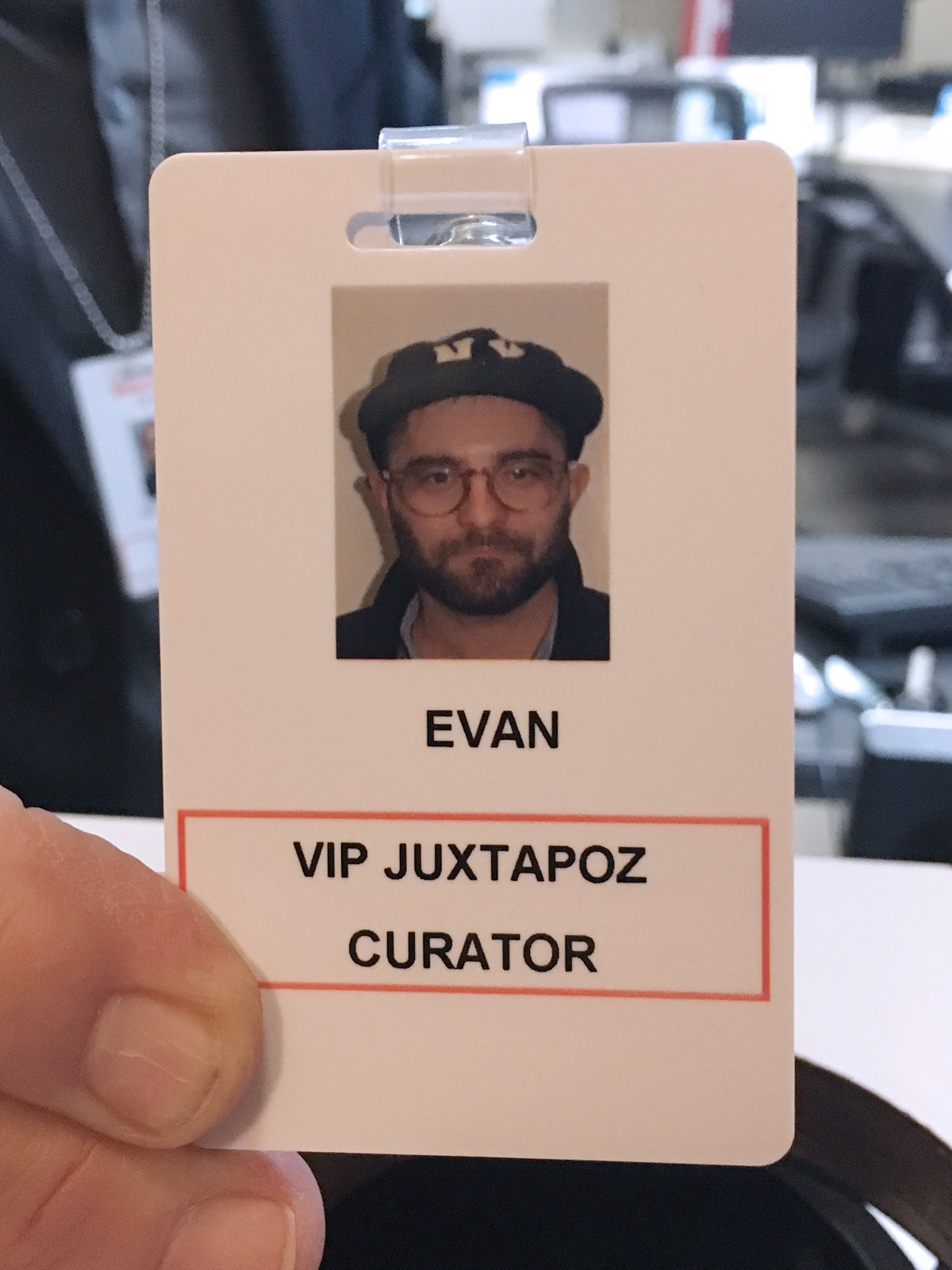
Jeff Hamada: I know you’ve been based in San Francisco for a while now. Did you grow up there too?
Evan Pricco: I grew up here, yeah. Well, most specifically, the East Bay, and my family is going on 3 generations in Oakland, so Oakland always felt like my hometown. It’s funny because this area has changed so much in the last 15 years, and I think I often don’t recognize it. I can’t tell if it’s because I’m changing and my tastes are changing or just the region is changing. But yeah, I grew up in Northern California, ditching high school and getting into trouble in the Berkeley Hills, wandering around College Avenue, going to Rasputin records in Concord every Friday to pick up whatever import record from the Britpop scene they got in, eating Blondie’s Pizza, and finding random excuses to drive to Ocean Beach.
Jeff Hamada: What were some of the things you were into back then?
Evan Pricco: My first love is and will always be more of the publishing side of things. I liked to consume culture through magazines. I just loved it. Grand Royal, Spin, Thrasher, NME, The Face, etc. Basically everything and anything that was on a printed page, I was all about it. And then of course, I would say around 7th or 8th grade, and I was obsesses with Oasis’s Definitely Maybe and Radiohead’s The Bends. Like obsessed—pick up a guitar you don’t know how to play, teach yourself every song sort of obsessed. I think around the same time, someone gave me some Pharcyde and Tribe Called Quest tapes, and mix that with all the other sort of great mid-1990s stuff happening, Beck’s Odelay, Beastie Boys, Pavement, DJ Shadow, Blur, I was very much into music culture and magazines.
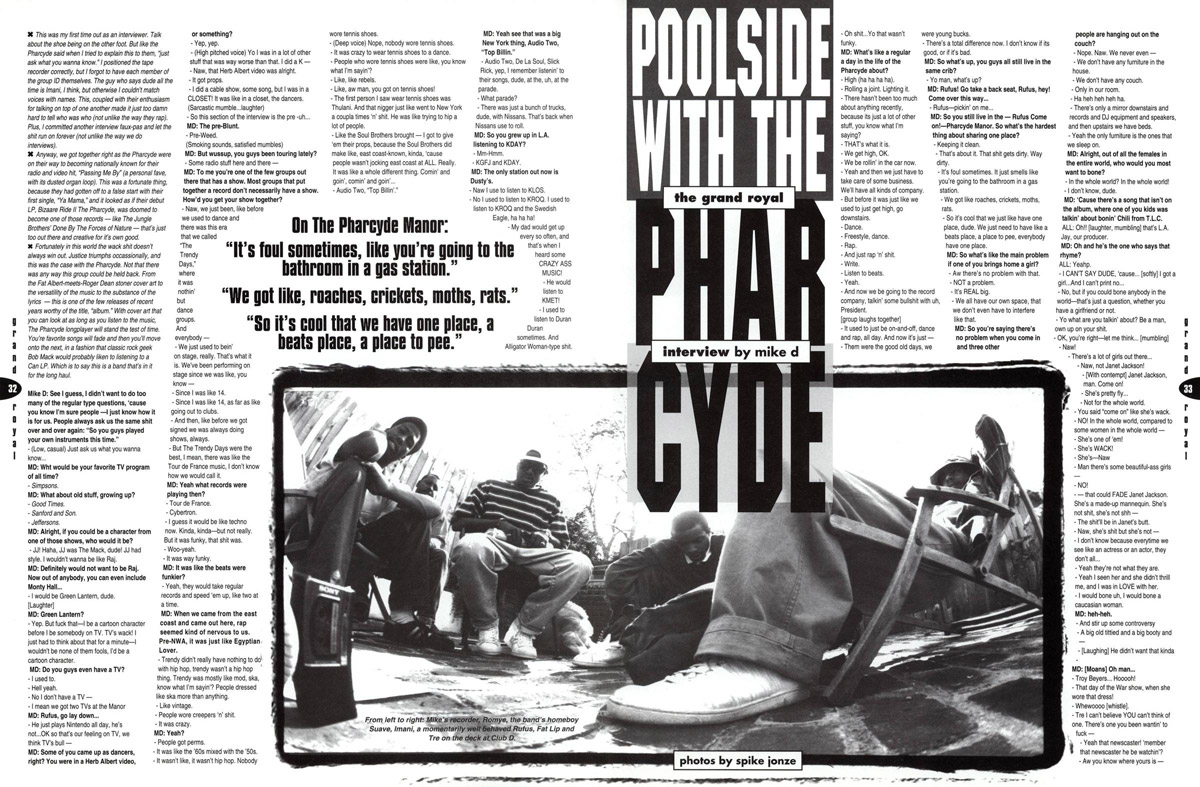
Evan Pricco: I think it subconsciously soaked into me what was happening in the art world at the time, which would become at least in my world the Beautiful Losers style of everything. Skate, art, music, design culture, I think that aesthetic was right in line with what I liked, but I was a little too young to be super aware of art culture. I think that stuff was on the periphery for me. Most things I knew about in the art world was through the Beastie Boys, to be honest. I knew who Haze and Glen E. Friedman and REAS were before I [actually] knew who they were.
And all that fashion at the time, too, Tommy Hilfiger and Polo, Stussy, I was obsessed with it. I remember having some really bugged out, colorful Polo and Hilfiger gear mixed with an assortment of Stussy hats and hoodies, and I just thought I was so cool, hahaha. Like the suburban kid who was on point, hahaha. But it was harder to be like that back then! Now, you see a kid in the suburbs with Supreme gear and in the mid-1990s, you had to be pretty clever or trying really hard to research and find that stuff out. I was lucky I had a mom and dad who just sort of let me get into it all, and a sister who was a little older and listening to Sebadoh and just pretty cool in general.
I also read a ton. I was a nerd. I read books I shouldn’t have been reading when I was young (hey, give your 12 year old The Wanting Seed by Anthony Burgess!), but it was great practice. I went to school for literature, so I guess it made sense in the end.
So magazines, music, fashion, I’m literally the same at the age of 13 as I am at 35.
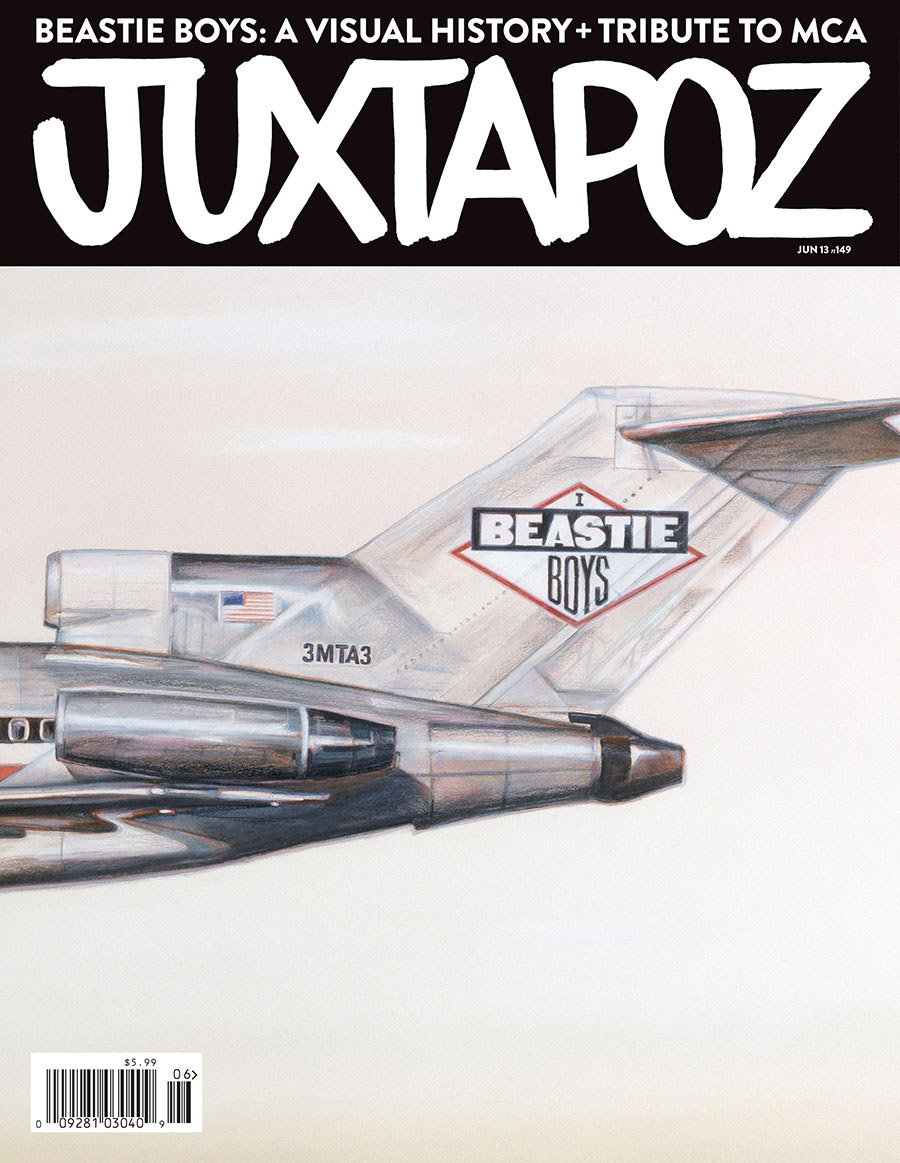
Jeff Hamada: For many people, flipping open an issue of Juxtapoz was the thing that first turned them on to making art. It made art accessible at a time when no one really cared about that. What was that thing for you?
Evan Pricco: Grand Royal Magazine and the Beastie Boys was what got me to dig deeper into art. Juxtapoz came after, I would say more toward the end of college for me (which was 2004). The irreverence that was Grand Royal, those sort of absurd stories mixed with some incredible personalties, really got me to open up to art. I also got to love dub and jazz from Grand Royal, but that’s another story. I think I first heard about Geoff McFetridge through the Beastie Boys, and Bruce Davidson, who continue to this day to be some of the my favorite artists.
But you know what really changed my life? I got an internship at Mcsweeney’s in the summer of 2004. And I was a fucking awful intern. The worst. I didn’t really understand it. I didn’t really want to impress anyone (haha), I wasn’t like, work competitive, I just liked being there. I had a good paying job that summer out of college at a book publisher four days a week, so one day a week I was in San Francisco doing this Mcsweeney’s internship. And Dave Eggers, who is a hero, is an artist! He got a degree in art, or at least studied art in college, and he was always having these really amazing people like Marcel Dzama and Chris Ware drawing things for various projects, and so all of a sudden, I’m surrounded by all this incredible art—that was the stuff I really loved. Mix that with mailing things to Zadie Smith, I was pretty much in heaven. When I interviewed Dave a few years ago I told him I was his worst intern ever, but he seemed pretty stoked his awful intern is the editor of Juxtapoz now… so it goes.
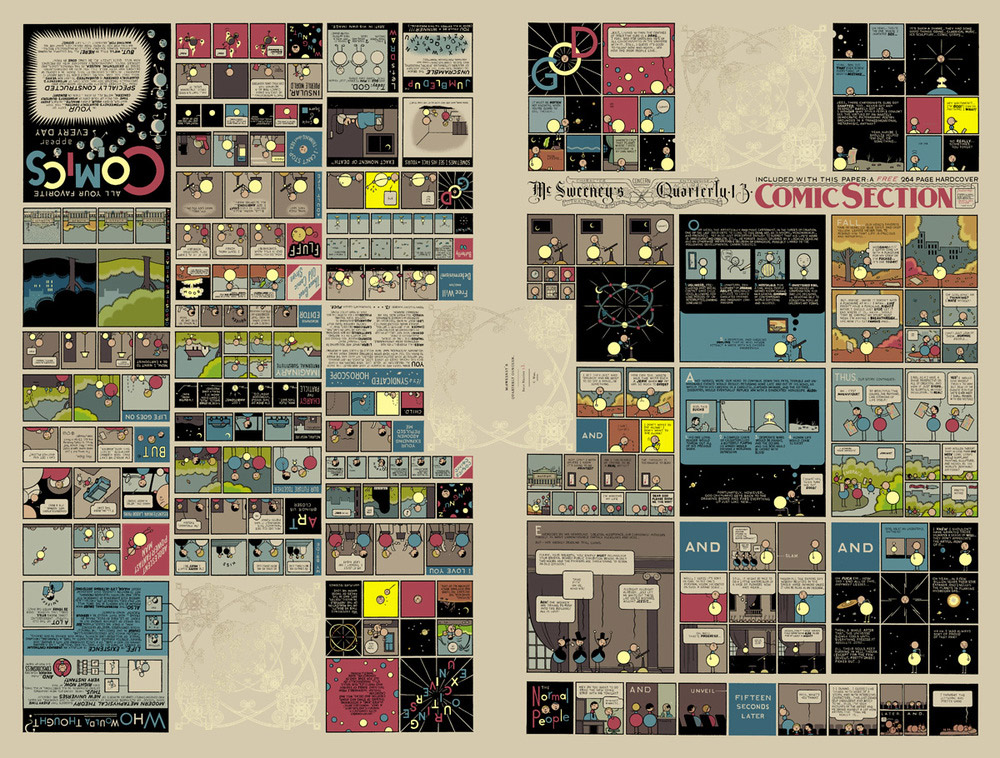
Jeff Hamada: McSweeney’s was always so next level with their art, packaging, everything. It must have been so cool to be there especially at that time. Also have to mention Beastie Boys were my gateway into art and culture as well. Which album do you think is their best? I know most people will say Paul’s Boutique, but for me it has to be one with the words Grand Royal printed across the top of it.
Evan Pricco: I think if I were to just immediately go to the Beastie Boys catalog in 2017, I would probably go Paul Boutique or Check Your Head, but at the time, Ill Communication was just in the perfect wheelhouse for me. I think for many people our age, the Beastie Boys social awakening really sort of helped us grow up with an open-mind, if that makes sense? That sounds so corny when I write it, but even things like the Tibetan Freedom Concert, or embracing jazz, and sort of moving on from the over-the-top machismo of their youth was probably good for all of us to see. But I think the first time I heard “Root Down” I think I immediately wanted to play bass. I think I immediately wanted a Fender Jazz, or a stand-up (which I got later on), and just play that bass riff over and over. So just in terms of timing of how old I was, Ill Communication was right there for me. Bruce Davidson photo on the cover, Alex Grey spread art in the booklet, Q-Tip…
Jeff Hamada: In the late 90s I started collecting Beastie Boys bootlegged concerts, and I think I have nearly every live show recording in existence up until around the time To The 5 Boroughs came out.
Evan Pricco: Oh man, you totally just blew my mind on the bootleg tip! I remember this weird ass spot in Montclair in Oakland that was seriously tucked away in what appeared to be a medical office complex that used to sell bootleg CDs of concerts. To be honest, I don’t even know if they were open to the public and my friends and I just bombarded their mail order scam business. I used to get these weird and rad bootlegs there… like “Radiohead: Live in Tokyo 1997,” or some shit like that. But it was like something out a of a Murakami novel just walking into this dentist building and then coming away with really over-priced burned CDs. Of course a few years later, it was all Napster and all this underground trading was probably gone, but for a minute, I was giving some scam artist weed money for about a year of my life.
Jeff Hamada: What was the first piece of art you bought or were given?
Evan Pricco: Ohhh, good question! I can’t quite put my finger on it, actually. I know the first things I ever thought was the best art ever were my mom’s old Fillmore concert posters from the late 1960s. She had these postcard stacks of all these incredible works by those old San Francisco poster artists, and those were a huge influence on me. The fact that I got to meet some of those artists as I got older sort of blows my mind. And the fact that my mom remembers people like R. Crumb and Stanley Mouse from back in the day sort of makes me really happy I ended up at Juxtapoz.
I have a few paintings in my house, but not many. I have some really nice works from Grotesk, Serena Mitnik Miller, Sage Vaughn, Josh Jefferson Jason Jagel, Swampy, Sam Friedman… and I have this incredible Barry McGee print he made with Juxtapoz probably the late 1990s. Its signed, too, and it was a nice gift given to me from Juxtapoz publisher, Gwynn Vitello. That probably has the most meaning to me.
Jeff Hamada: In the early 2000’s a lot of the art I consumed online was on sites based in California—Fecal Face, Juxtapoz, Upper Playground, Hamburger Eyes—was Upper Playground your first experience working in that scene?
Evan Pricco: Absolutely. I owe my entire career to Matt Revelli of UP giving me a chance. He hired me to work for Upper Playground because I think he knew he wanted to expand Upper Playground a bit into that blog-centric art coverage, and lucky for me, he got hired at Juxtapoz shortly after and he knew I really wanted to be at a magazine and he gave me the shot at Juxtapoz, too. I was 23, 24, and just was ready to work 18 hours a day to be in this world.
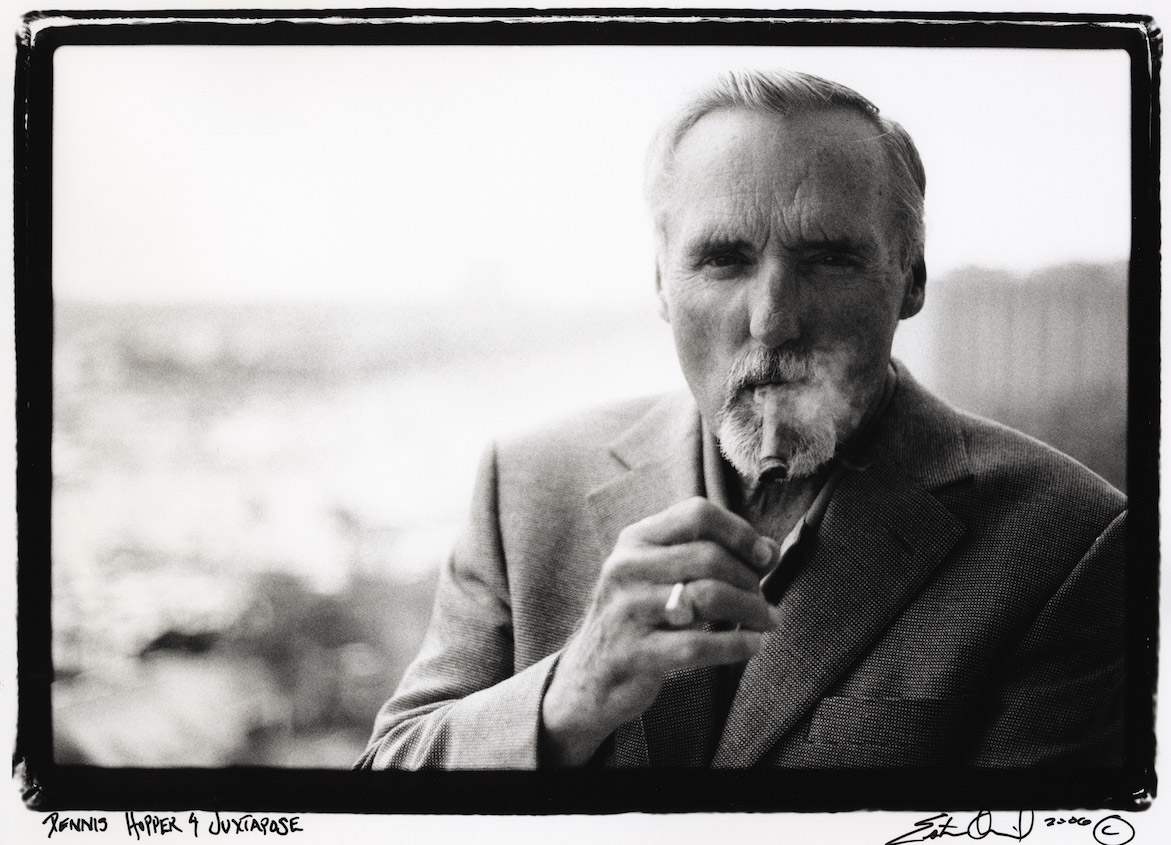
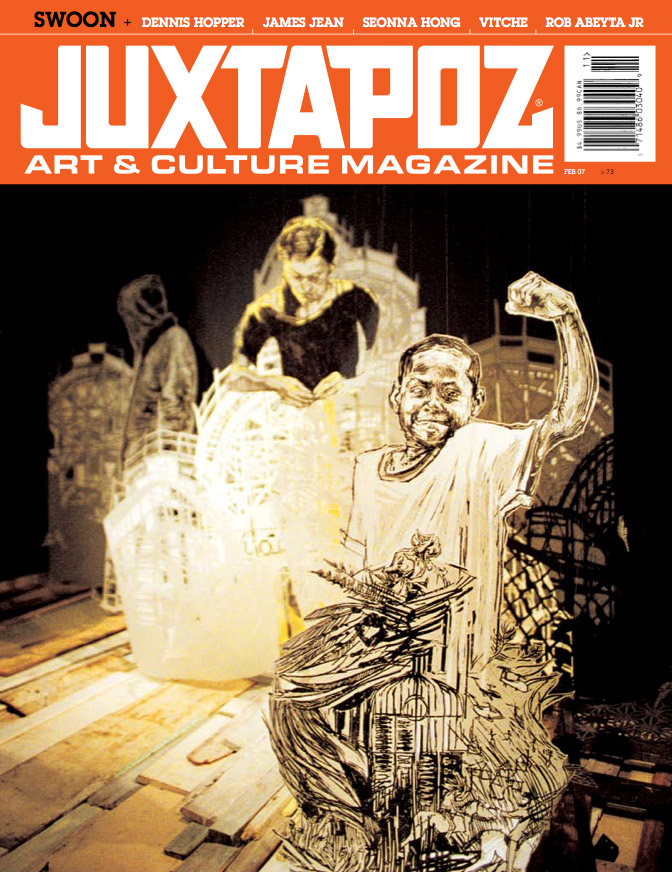
Evan Pricco: I think about it now, 2005, 2006, Fecal Face and Upper Playground meant everything to me. Jeremy Fish, Tiffany Bozic, Mike Giant, Sam Flores, Alicia McCarthy, Barry McGee, Hamburger Eyes… San Francisco was such a special place from the mid-1990s to those mid-00s. There was such a nice network of galleries and underground things happening. There was Park Life later on, there was Dave Eggers and Mcsweeney’s, there was Juxtapoz, there was Thrasher and SLAP, it was such a nice time. I learned pretty much everything in those early days at Upper Playground. There are people who were working there at the time who just taught me so much.
Jeff Hamada: A lot of websites and publications have come and gone since that era, how has Juxtapoz changed over the years to remain relevant?
Evan Pricco: We just broadened what it was we could cover. I think we expanded our range of what artists, cultures and genres we could go after. I love that we have so many different styles in the magazine, so many different avenues to cover creative lives. But we had to! You have to! We had to start creating more off-site projects, we had to start pushing hard on social media, we had to expand our print coverage! But, we didn’t just do it for survival; we wanted to do this. We really wanted to be the most widely read art and culture magazine in the US and the world. We wanted to have Kaws on the cover one issue, and the next issue do an environmental-themed issue. I didn’t want the magazine to be just one thing. And we have fantastic editors who come up with great content, I travel all over to cover things and be out there, and our publisher was really excited to see the whole evolution unfold.
Mostly, though, we have had an audience grow so much over the last decade as the print publishing world saw declines. We were at an advantage because we started growing web and social, as the print world was struggling in a way that was different than other publications. We were lucky to always have the print be our epicenter, and expand from that. And then it worked vice versa, we had this print product and brand name that led people to our site and socials. So we just sort of were lucky to have these 3 entities that all supported each other when other publications, not only art pubs, but all magazines, struggle with that balance. We also thought of it as an advantage.
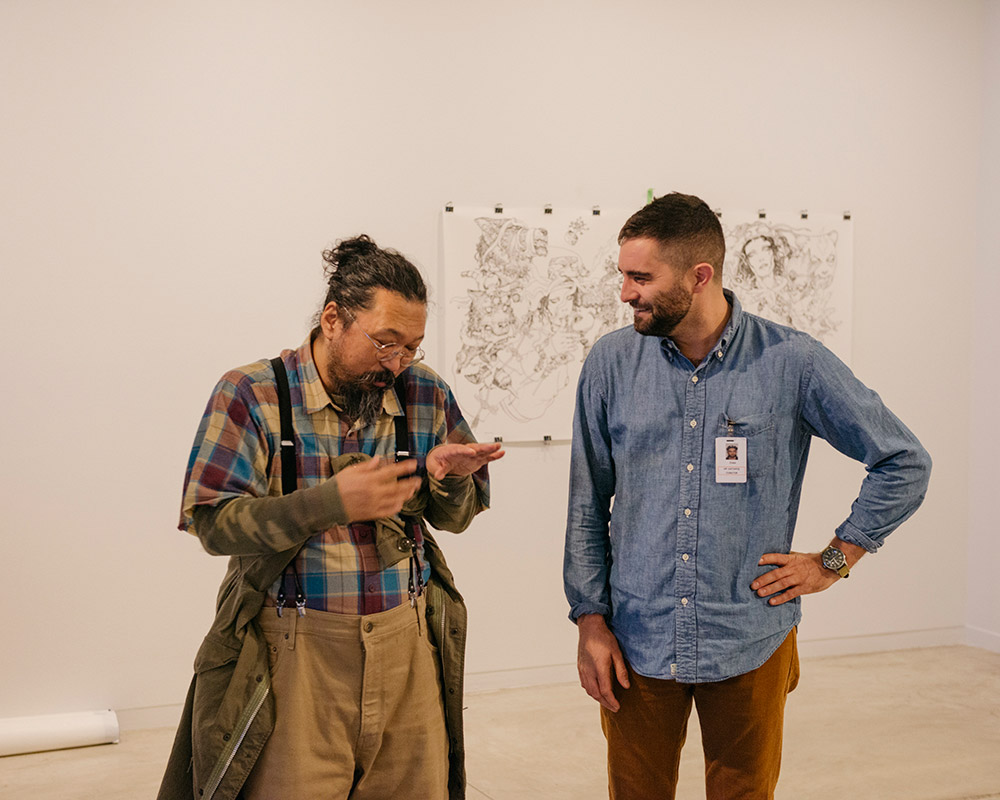
Jeff Hamada: The Superflat show you co-curated with Takashi Murakami was one of the best shows I’ve ever seen at the Vancouver Art Gallery. What were some of the unexpected challenges of bringing that show to life?
Evan Pricco: Shipping from Japan! Hahaha. To be honest, Takashi and I, and James Jean, just had a conversation about how we all saw the contemporary art world, what we saw as the challenges for emerging artists, what we saw were the shortfalls of being an all-time, established artist like Takashi, and it was just go time from there. Takashi and I just decided to do it. Let’s pick all our favorite artists of the moment, let’s revise why we think Superflat and Juxtapoz are similar ideas, and let’s get it out in front of people.
Juxtapoz x Superflat – curated by Takashi Murakami and Evan Pricco
Evan Pricco: The unexpected challenges… well, I’m not 100% used to setting up exhibitions, either gallery or museums. Takashi is very much used to it. So I had to get used to thinking about logistics in new ways and then at times, I had to start thinking of myself as curator and why I chose certain artists and why I wanted those artists to represent Juxtapoz.
It was also a life-changing moment for me. Not only did I get those wonderful emails back from my favorites like Trenton Doyle Hancock, Nina Chanel Abney, Todd James, McFetridge when they said yes, but I got to be around works by Urs Fischer and David Shrigley. It was all quite monumental for me in the end.
Jeff Hamada: How do you balance pleasing your audience with challenging them?
Evan Pricco: Here is the great thing: Juxtapoz is 24 years old. We have had decades of pleasing and challenging that I get to work with. That solid history allows you to have fun with challenging your readers, because in the end, there is 24 years of goodwill and arguments and crowd-pleasing and challenges you get to enjoy. I love when we get educated feedback from readers about something they don’t like. That’s great. That’s engagement. That’s an active reader. That is the best.
And I think we all know… Instagram sort of lets you do both crowd-pleasing work with more challenging stuff, like, every hour. The print mag, the archival part of the brand, that is still where I want to challenge people. Introduce new artists and art, have active political positions, have in-depth looks into new things. Social media you get to have a little more relaxed, entertain-me-now sort of conversations with readers that doesn’t have to constantly be a challenge or some huge discourse. Sometimes you just want to see something universally cool.
Jeff Hamada: I find this balance especially tough on a platforms like Facebook and Instagram where pandering to an audience is rewarded. Do you feel like we (arts and culture publications) are painting ourselves into a corner by playing Facebook’s game?
Evan Pricco: Oh God, next question! I feel like you just have to do your thing. If it works in the reward system of Facebook, and trust me, I know what will get the clicks, I think you just don’t build your whole program around that. We have decided to just do our thing. Some of it works and some of it doesn’t. We have over 1 million followers on Instagram, if I thought every single one of them was not going to like the Jonas Wood painting I just posted, I would still post it. It’s relevant, it’s what’s happening now. I think you just have to stay true to your curatorial eye, make sure you also stay true at times to your audience’s eye, and try and pretend Facebook and Instagram doesn’t judge all your work by passive aggressive “likes”.
Jeff Hamada: What do you think your duties are as a human curator in the age of computer algorithms?
Evan Pricco: Oh, man, these questions are good. You know what? I don’t decide on content because of followers or preconceived ideas of what social media buzz something is going to have. I mean, yes, of course, you do a Banksy story chances are you will have more eyeballs. But he almost always does good work, so that’s an easy one. I think you just have to assume that not everyone knows every single artist that you know, and that the digital universe is way different than that tangible, physical world of an actual magazine in your hand, and that we make choices because we believe that that physical product means something to someone who buys it. So I think I just try and almost avoid thinking about what is going to be internet “buzzie” and focus what I think will have a lasting impression 10 years from now.
I say that likes its easy…
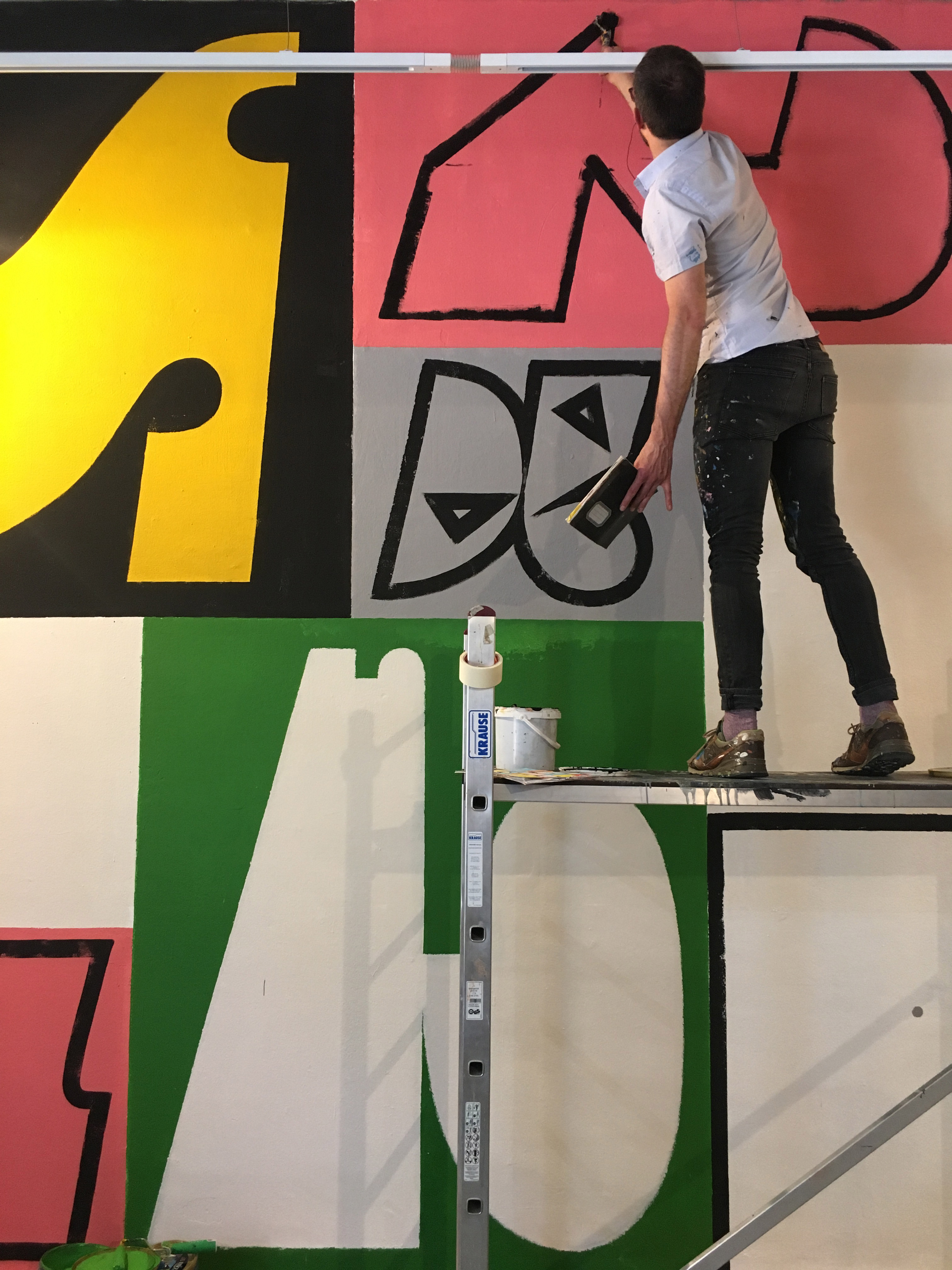
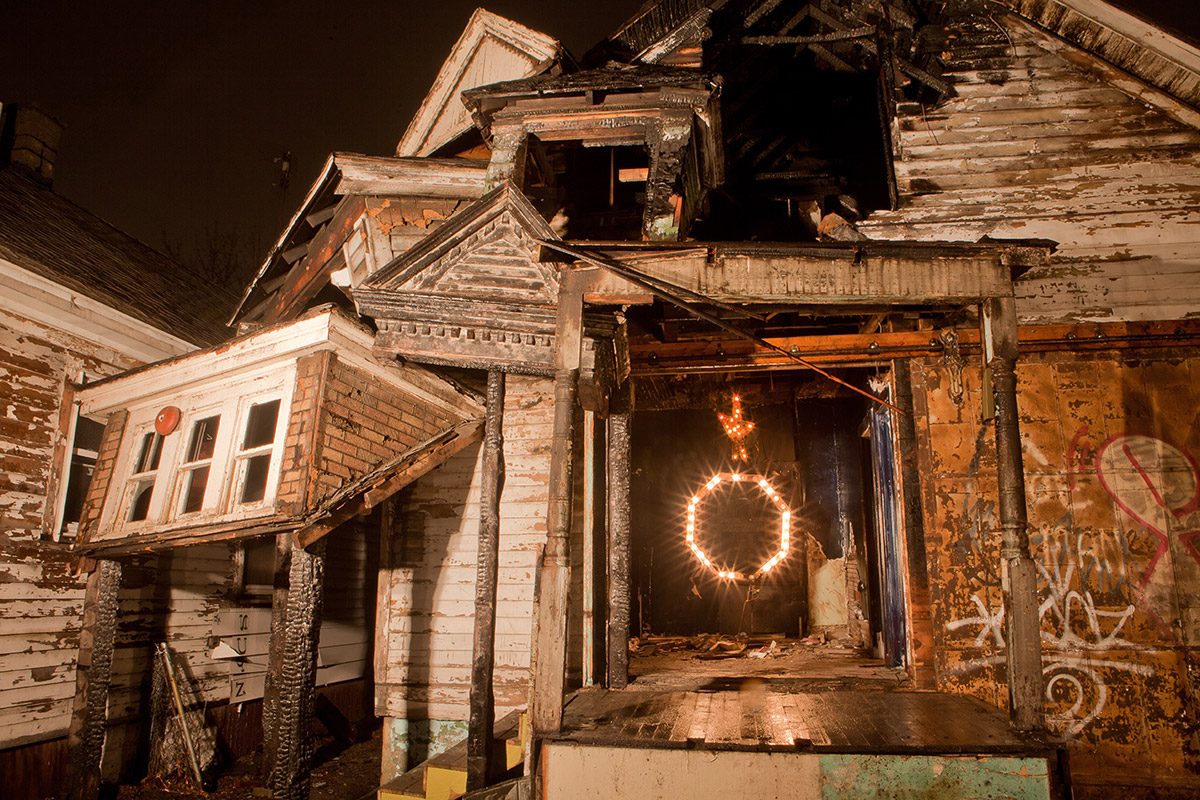
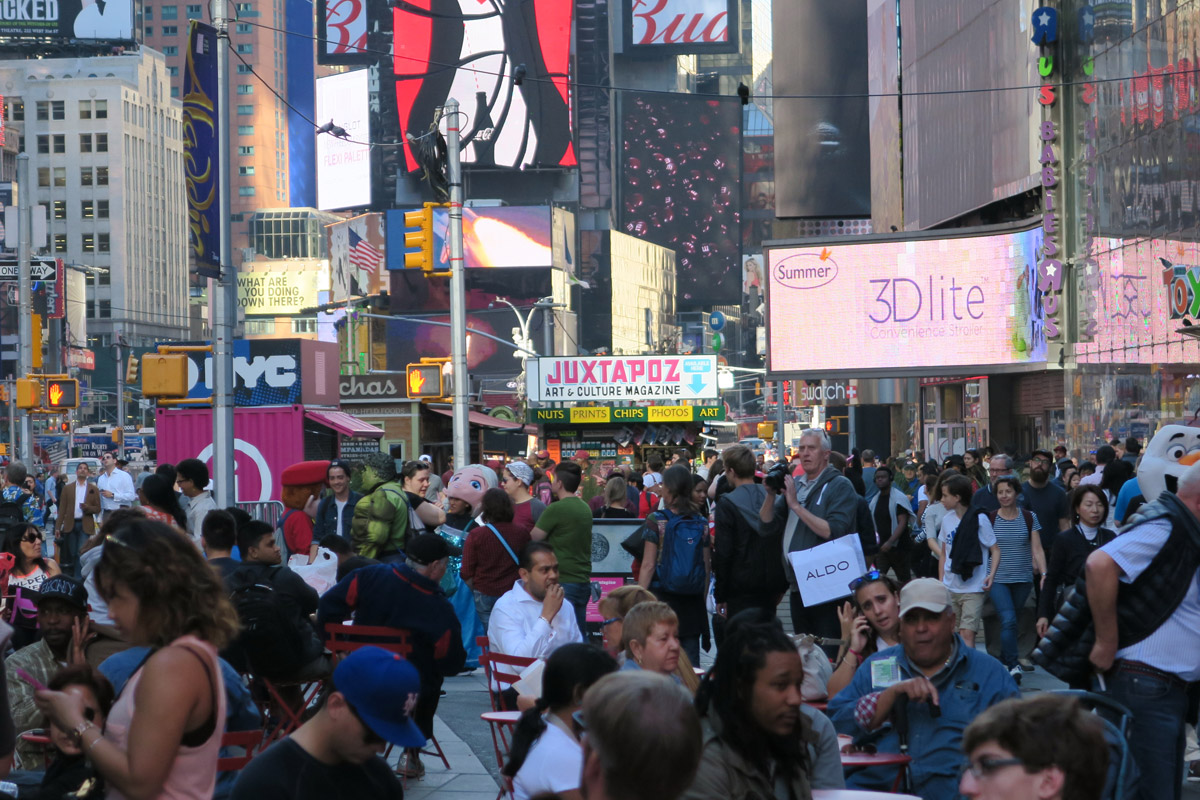
Jeff Hamada: I know you’re always working on a million different projects, what’s next for you?
Evan Pricco: Juxtapoz is going quarterly next year. And what you would think would clear up my schedule somehow made it more hectic! But that’s great. I love busy. I love hectic. I’m super excited about the quarterly because it will be more pages, bigger size, more content. But right now, Miami is on the mind. We have a 3-story building we are taking over from December 7—10, and we have projects from Conor Harrington, Jean Jullien and a bunch of other great people just making good shit for the week. I’m so happy about it all.
There may be a Juxtapoz bookstore in the future, there may be some more pop-ups… we have a new product line coming out… its going to be fun!
Join our Secret Email Club
Our weekly newsletter filled with interesting links, open call announcements, and a whole lot of stuff that we don’t post on Booooooom! You might like it!
Sign UpRelated Articles

